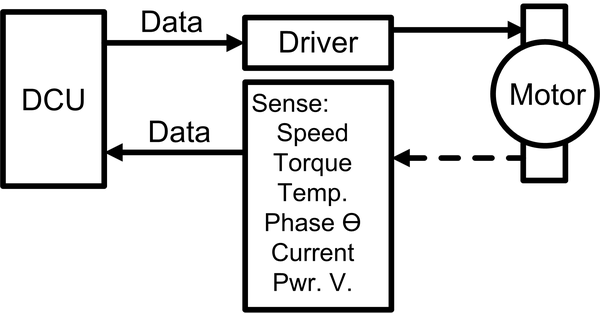Chapter 9. Sensing Peripheral Devices
Sense circuits convert real-world analog information and events to digital data suitable for digital control unit (DCU) processing. Figure 9-1 shows an example of using a motor under digital control. This figure illustrates the sensor possibilities for just a rotating motor. Depending upon application and system needs, a motor can have multiple sensors to determine the state of the motor, including:
Power supply voltage
Rotational speed
Output torque
Current
Rotational phase
Temperature
Sensors are used to both control the system and monitor its health.

Figure 9-1. Sensor systems on a motor
Suitable sensors are available for all of these motor performance monitors.
Sensors for Everything
Sensors are the path through which real-world physical phenomena are represented by equivalent electrical signals. For embedded systems, sensor information will be converted to digital data.
Many older electronic systems would directly use an analog sensor output as part of a control system. Modern systems primarily digitize the sensor output for use by a digital control protocol.
Sensors have been developed for many different things, including:
Fluid levels in storage tanks
Flow rates in pipes
Physical force/strain/torque
Specific gas detection
Environment humidity
Magnetic field
Digital compass orientation
Acceleration/velocity/motion
Avionics: pitch/yaw/roll ...
Get Applied Embedded Electronics now with the O’Reilly learning platform.
O’Reilly members experience books, live events, courses curated by job role, and more from O’Reilly and nearly 200 top publishers.

